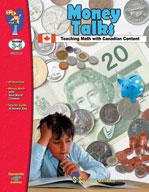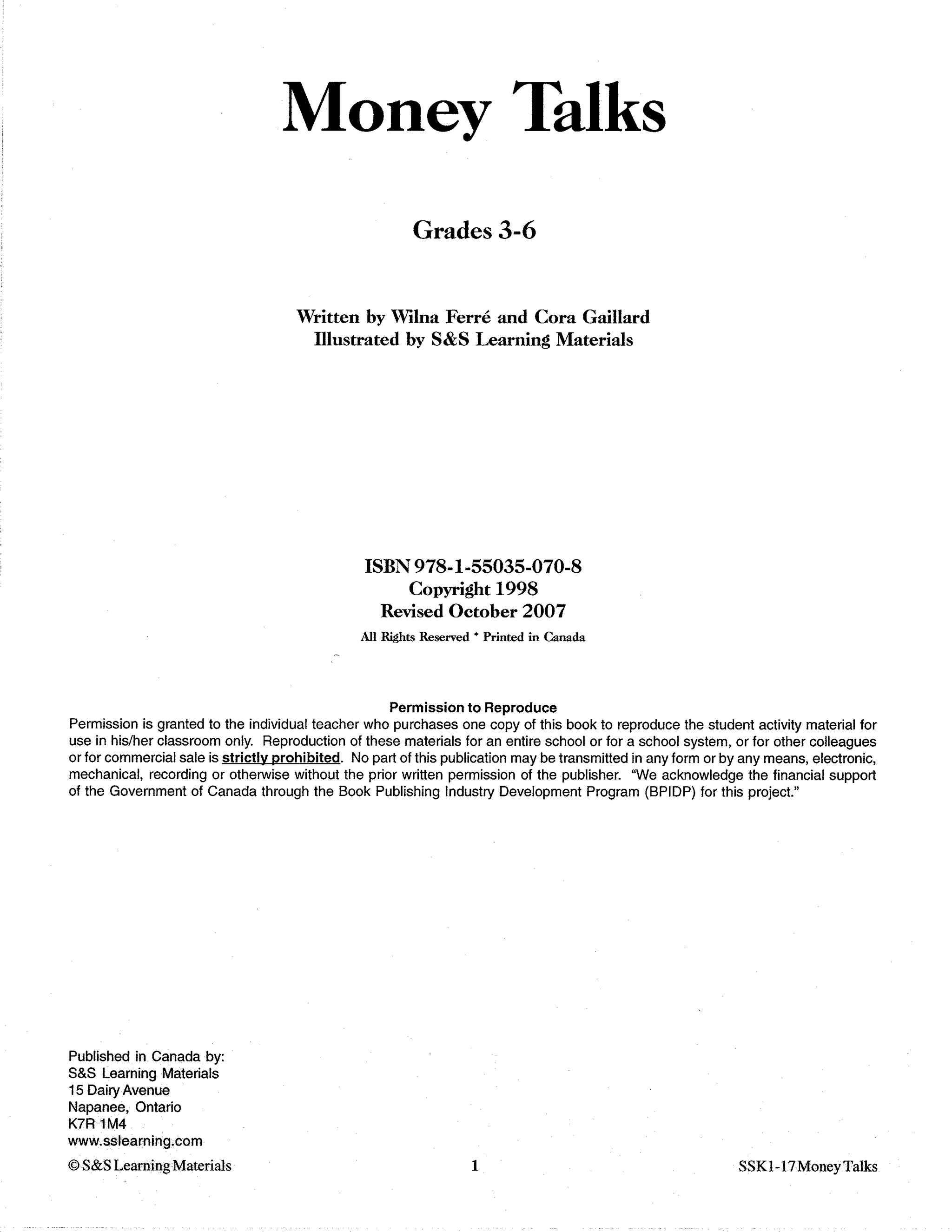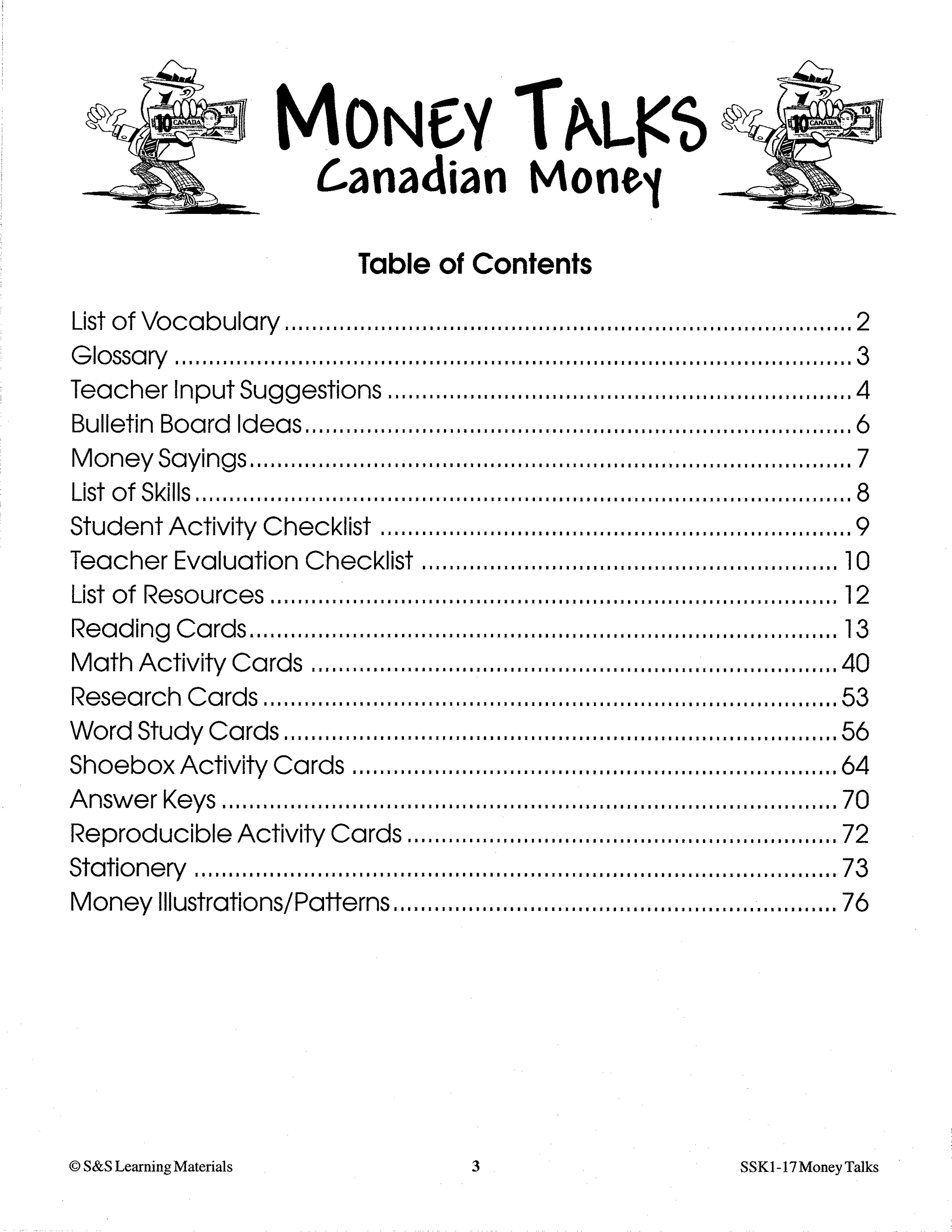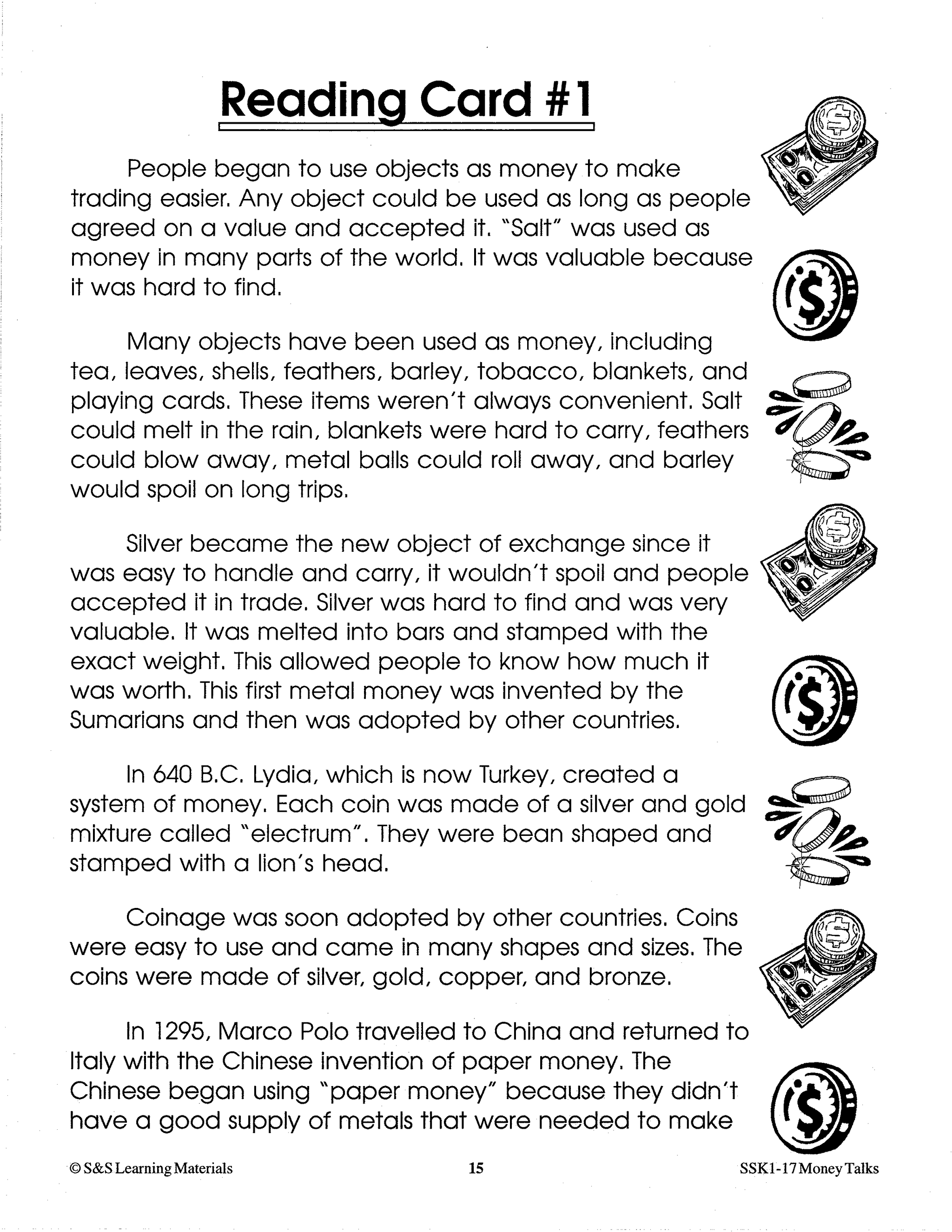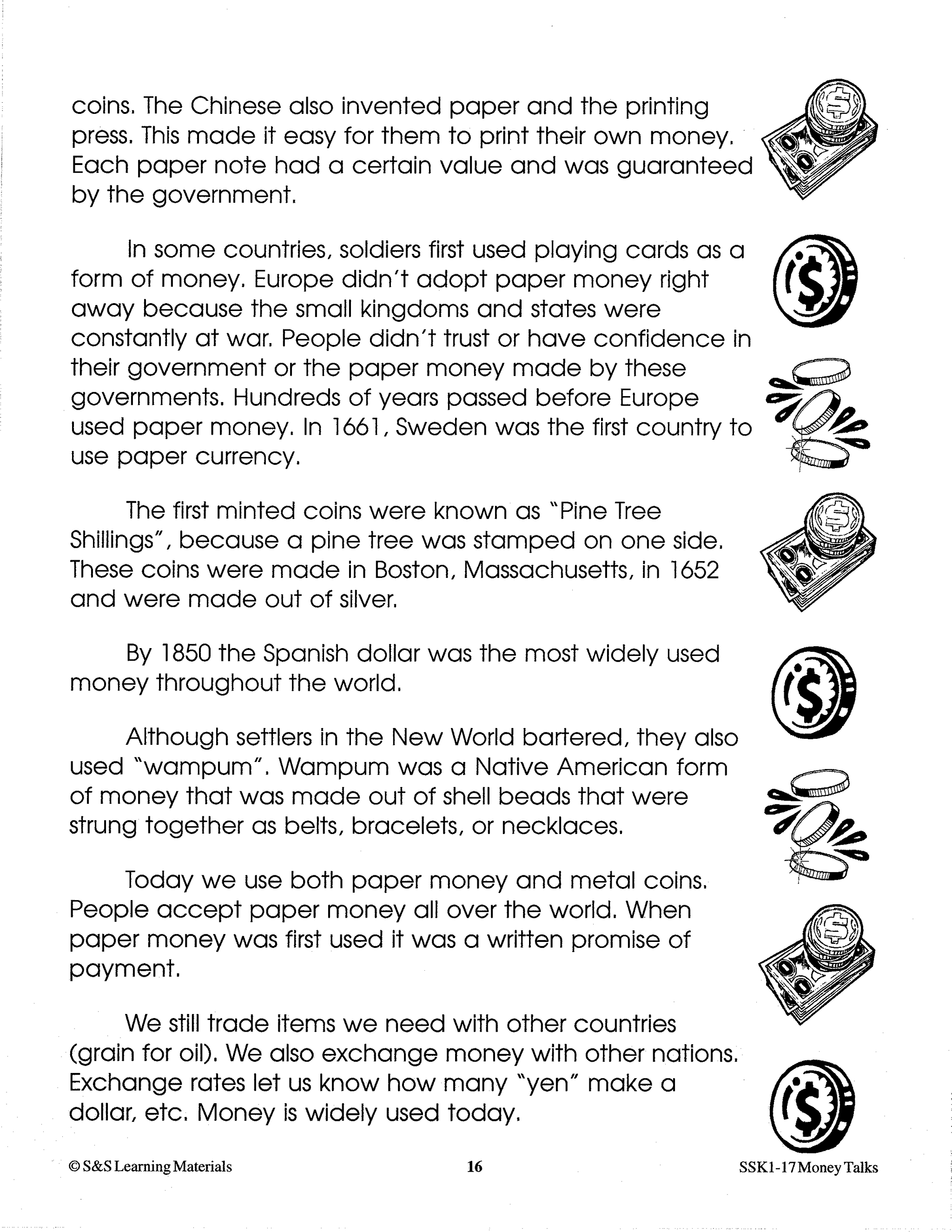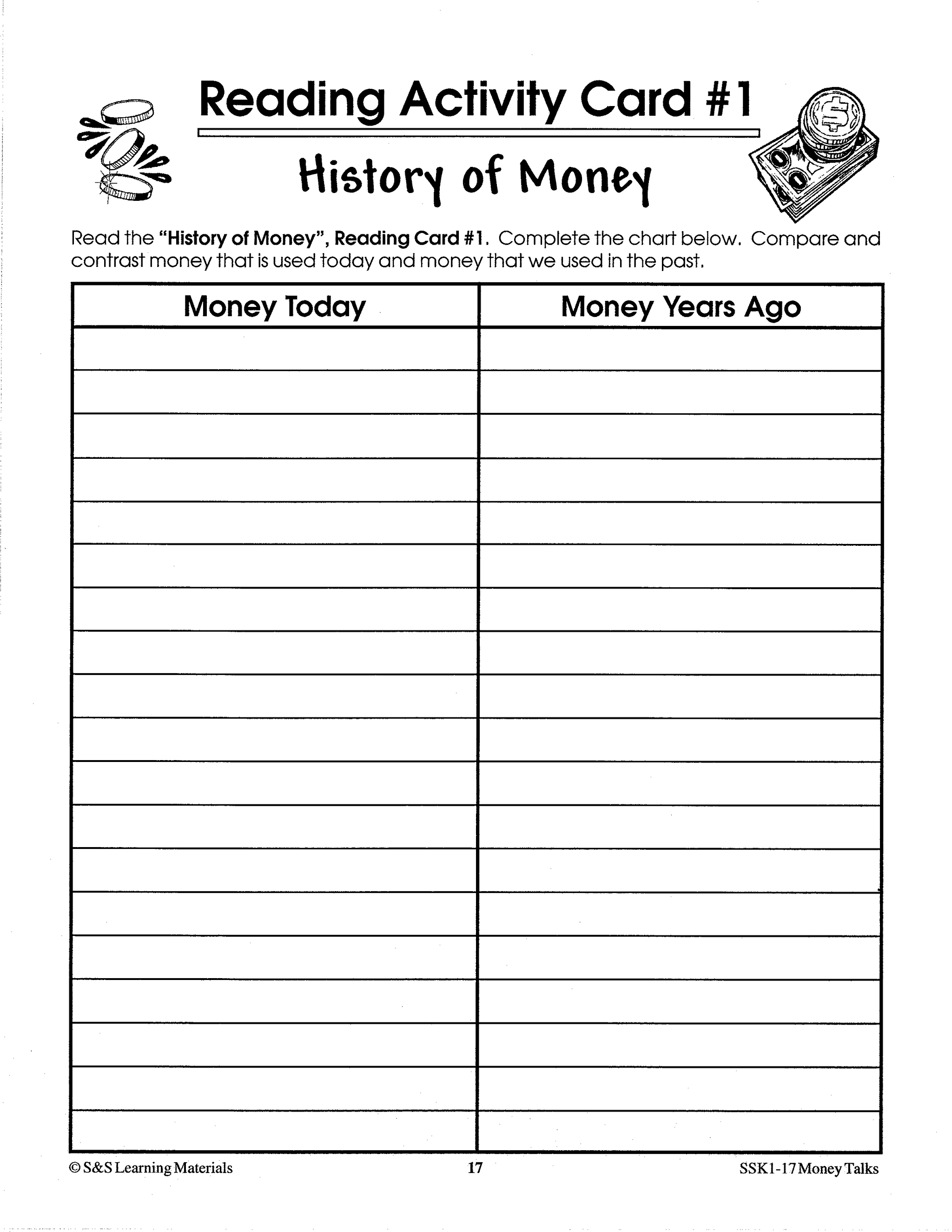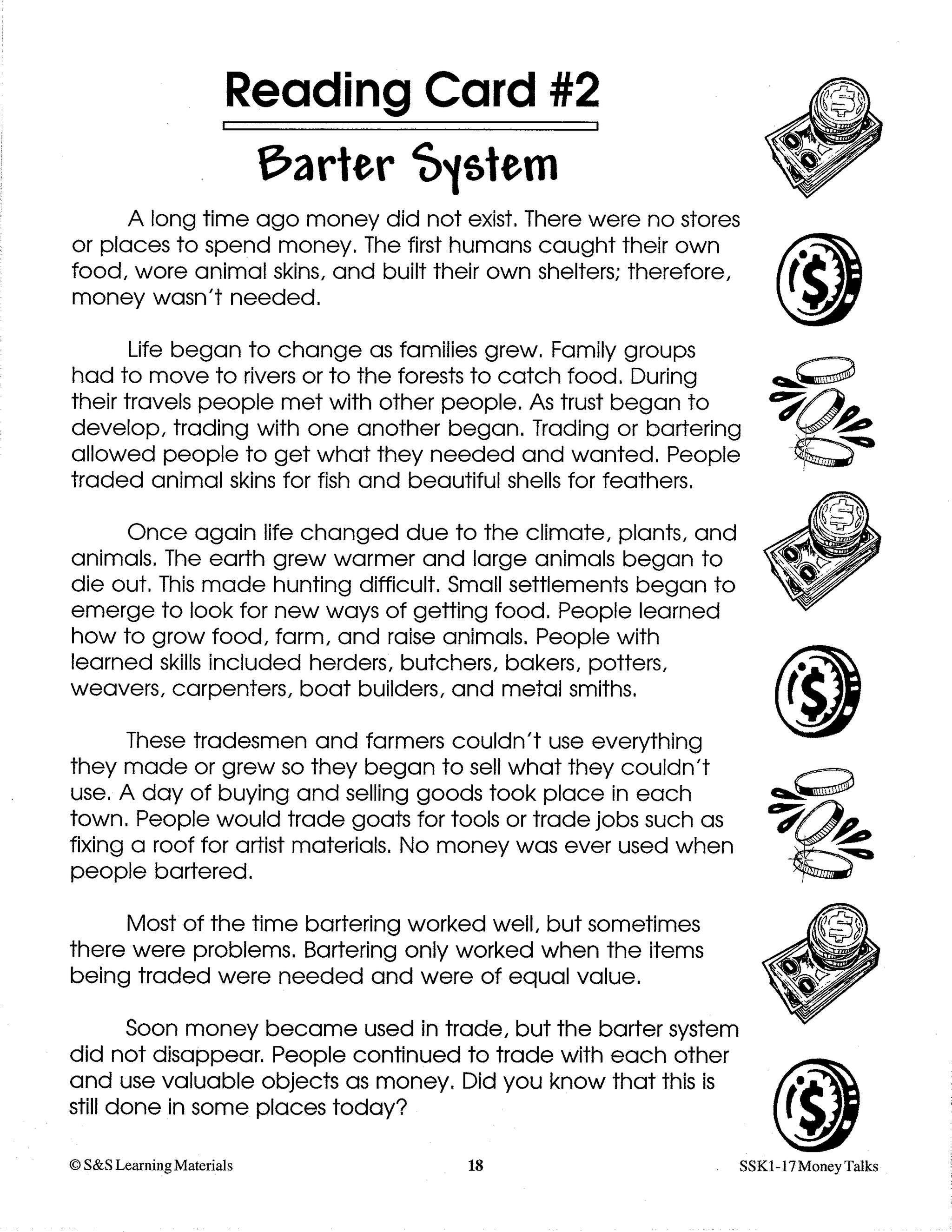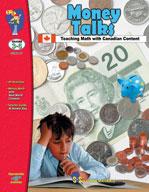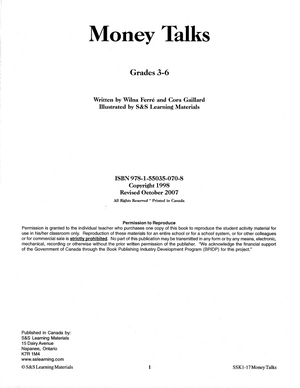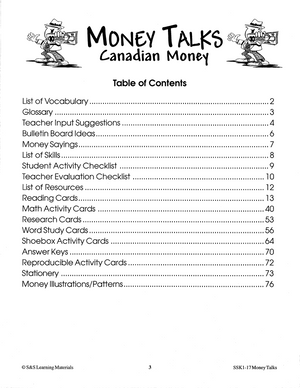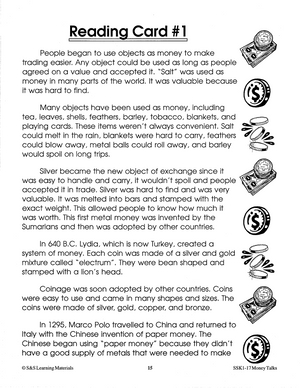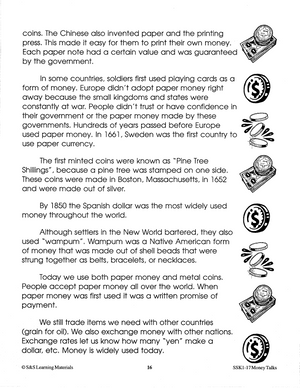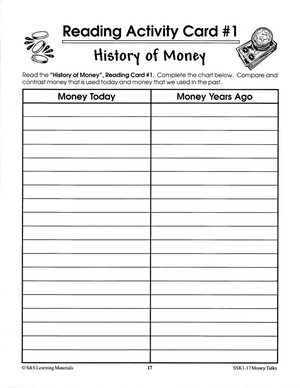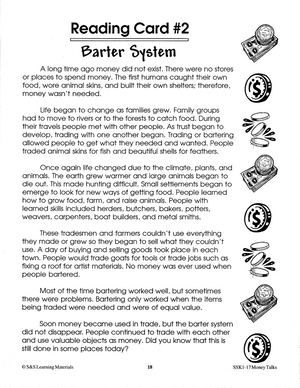Subjects
Money Talks: Using Canadian Currency Grades 3-6
EBK117
$22.99 CAD
Additional information:
- Author : Ferre, Wilna/Gaillard, Cora
Study the history of money, the barter system, the Canadian mint, budgeting, banks and ATM machines, cheques/credit cards plus piggy banks, purses and wallets. Research metals, alloy symbols, currency in other countries, and famous rich people. 45 activities.
Money Talks Overview
"Money Talks" is an educational resource designed for grades 3-6, focusing on financial literacy and the understanding of money concepts. It includes various activities, definitions, and suggestions for teachers to engage students in learning about money.
Key Financial Terms and Definitions
The text provides a comprehensive list of financial terms relevant to money management and currency. Definitions include terms like "allowance," "currency," "deposit," and "numismatist," which help students understand basic financial concepts.
-
Allowance: Regular portion of money given to family members.
-
Currency: Paper money in circulation.
-
Deposit: An amount of money put into an account.
-
Numismatist: A person who collects and studies coins.
Teacher Input Suggestions for Engaging Students
The text outlines various interactive activities for teachers to enhance students' understanding of money. Suggestions include field trips, inviting guest speakers, and creating hands-on experiences related to money.
-
Have students contribute foreign currency and artifacts for display.
-
Arrange a visit to a local bank for a report-writing activity.
-
Invite a numismatist to speak about coin collecting.
-
Organize activities like bake sales or auctions to practice spending money.
Creative Bulletin Board Ideas
Several creative ideas for bulletin boards are provided to visually engage students with money concepts. These ideas incorporate money sayings, currency maps, and thematic decorations.
-
Use a black background with colorful sentence strips featuring money sayings.
-
Create a large tree silhouette with dollar signs hanging from branches.
-
Mount a world map showing different countries and their currencies.
Money Sayings and Their Meanings
The text includes a list of common money sayings that convey various financial concepts and attitudes. These sayings can be used to spark discussions about money management and values.
-
"Money doesn't grow on trees!" emphasizes the importance of saving.
-
"A penny for your thoughts!" invites sharing opinions.
-
"Put your money where your mouth is!" encourages action over words.
Reading and Research Skills Related to Money
The text outlines various skills and activities related to understanding money, including reading, research, word study, math, and creative shoebox activities. These skills are designed to enhance students' knowledge of money management, history, and practical applications.
-
Reading Skills: Focus on the history of money, the barter system, and the evolution of currency.
-
Research Skills: Topics include famous rich people, currency in other countries, and the Canadian Mint.
-
Word Study: Activities include crossword puzzles, word searches, and exploring synonyms and antonyms related to money.
-
Math Skills: Emphasizes skip counting, budgeting, and solving money-related problems.
-
Creative Activities: Engages students through shoebox activities like creating a money rap and exploring coin collecting.
Overview of Money History and Evolution
The text provides a detailed account of the history of money, from barter systems to modern currency. It highlights significant milestones in the development of money, including the introduction of coins and paper currency.
-
Barter System:Early trading methods without money, using items of equal value.
-
First Coins: Lydia created coins made of electrum in 640 B.C.
-
Paper Money: Introduced in China, with Marco Polo bringing the concept to Europe in 1295.
-
Minting Coins: The Royal Canadian Mint has produced coins since 1908, with a capacity of three billion coins annually.
Understanding Canadian Currency and Minting Process
The text explains the Royal Canadian Mint's role in producing Canadian currency and the materials used in coin production. It also describes the process of minting coins.
-
Royal Canadian Mint: Established in Ottawa, produces various coins including the loonie and toonie.
-
Materials: Coins are made from metals like nickel, copper, and aluminum-bronze.
-
Minting Process: Involves design, rolling, blanking, rimming, annealing, washing, and coining.
-
Production Capacity: The Winnipeg plant can produce three billion coins per year.
Money Management and Budgeting Techniques
The text emphasizes the importance of budgeting and managing money effectively. It provides strategies for tracking income and expenses.
-
Budgeting Basics: Calculate weekly income and list needs versus wants.
-
Savings Strategies: Encourage saving a portion of income for future needs.
-
Spending Awareness: Highlight the importance of distinguishing between needs and wants to avoid overspending.
Banking Systems and Financial Institutions
The text discusses the role of banks in managing money and the services they provide. It also covers the importance of using banks for savings and transactions.
-
Bank Functions: Accept deposits, provide loans, and offer various financial services.
-
Safety and Growth: Banks provide a safe place for money and earn interest on deposits.
-
Types of Accounts: Savings accounts are recommended for earning interest over time.
Modern Payment Methods and Technology
The text outlines various modern payment methods, including cheques, credit cards, and electronic banking. It highlights the convenience and risks associated with these methods.
-
Cheques: Written payments that require sufficient funds in the account.
-
Credit Cards: Allow purchases on credit, with the importance of paying off balances to avoid high interest.
-
Electronic Banking: Includes ATMs and online banking, providing easy access to funds and transactions.
Creative Activities to Engage Students
The text includes various creative activities designed to engage students in learning about money. These activities encourage hands-on learning and critical thinking.
-
Shoebox Activities: Students create projects related to money, such as rap performances and coin collections.
-
Research Projects: Students explore topics like famous rich people and the history of currency.
-
Artistic Expressions: Activities include creating collages and acrostic poems related to money themes.

